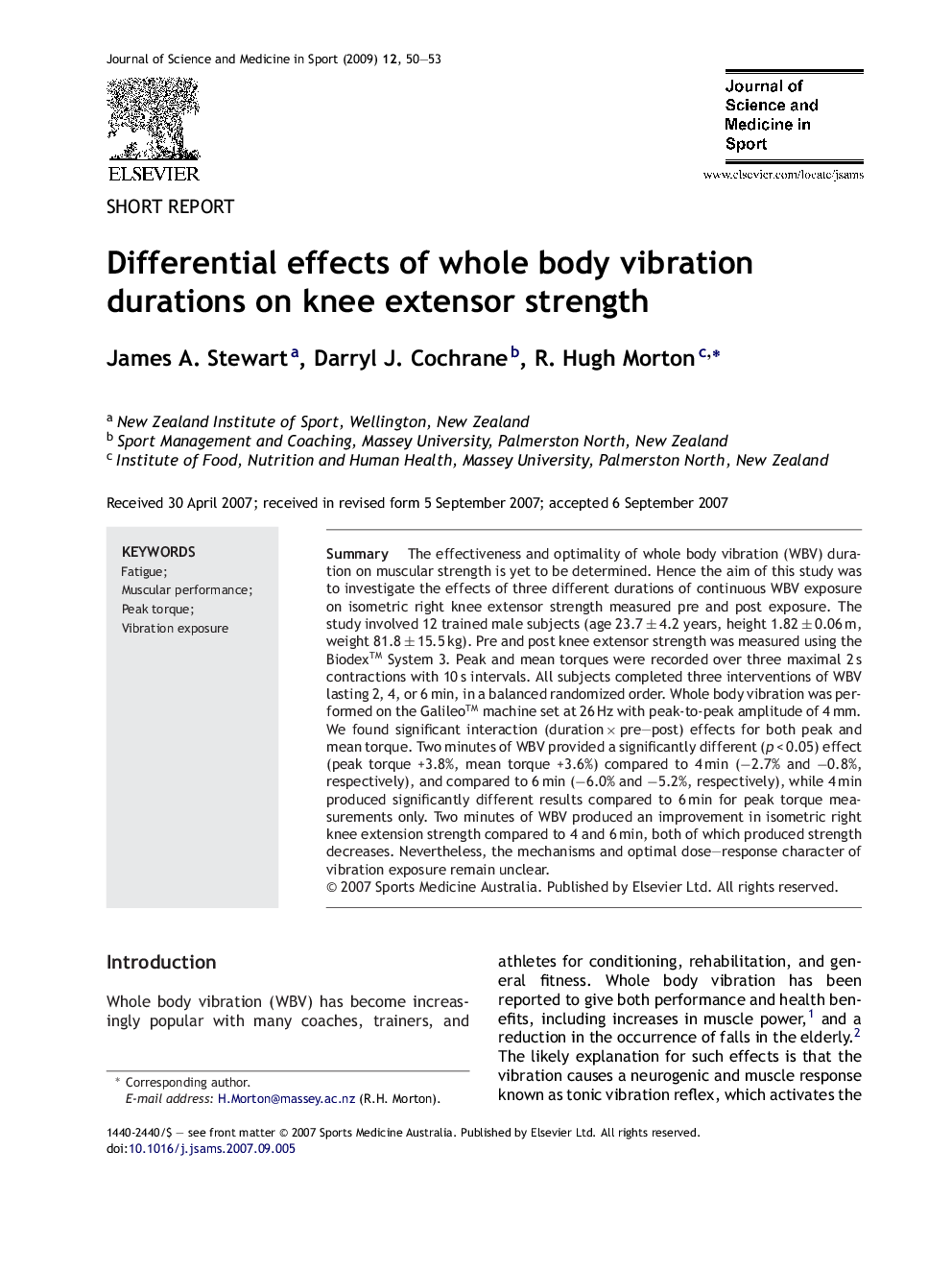| Article ID | Journal | Published Year | Pages | File Type |
|---|---|---|---|---|
| 2708786 | Journal of Science and Medicine in Sport | 2009 | 4 Pages |
SummaryThe effectiveness and optimality of whole body vibration (WBV) duration on muscular strength is yet to be determined. Hence the aim of this study was to investigate the effects of three different durations of continuous WBV exposure on isometric right knee extensor strength measured pre and post exposure. The study involved 12 trained male subjects (age 23.7 ± 4.2 years, height 1.82 ± 0.06 m, weight 81.8 ± 15.5 kg). Pre and post knee extensor strength was measured using the Biodex™ System 3. Peak and mean torques were recorded over three maximal 2 s contractions with 10 s intervals. All subjects completed three interventions of WBV lasting 2, 4, or 6 min, in a balanced randomized order. Whole body vibration was performed on the Galileo™ machine set at 26 Hz with peak-to-peak amplitude of 4 mm. We found significant interaction (duration × pre–post) effects for both peak and mean torque. Two minutes of WBV provided a significantly different (p < 0.05) effect (peak torque +3.8%, mean torque +3.6%) compared to 4 min (−2.7% and −0.8%, respectively), and compared to 6 min (−6.0% and −5.2%, respectively), while 4 min produced significantly different results compared to 6 min for peak torque measurements only. Two minutes of WBV produced an improvement in isometric right knee extension strength compared to 4 and 6 min, both of which produced strength decreases. Nevertheless, the mechanisms and optimal dose–response character of vibration exposure remain unclear.
